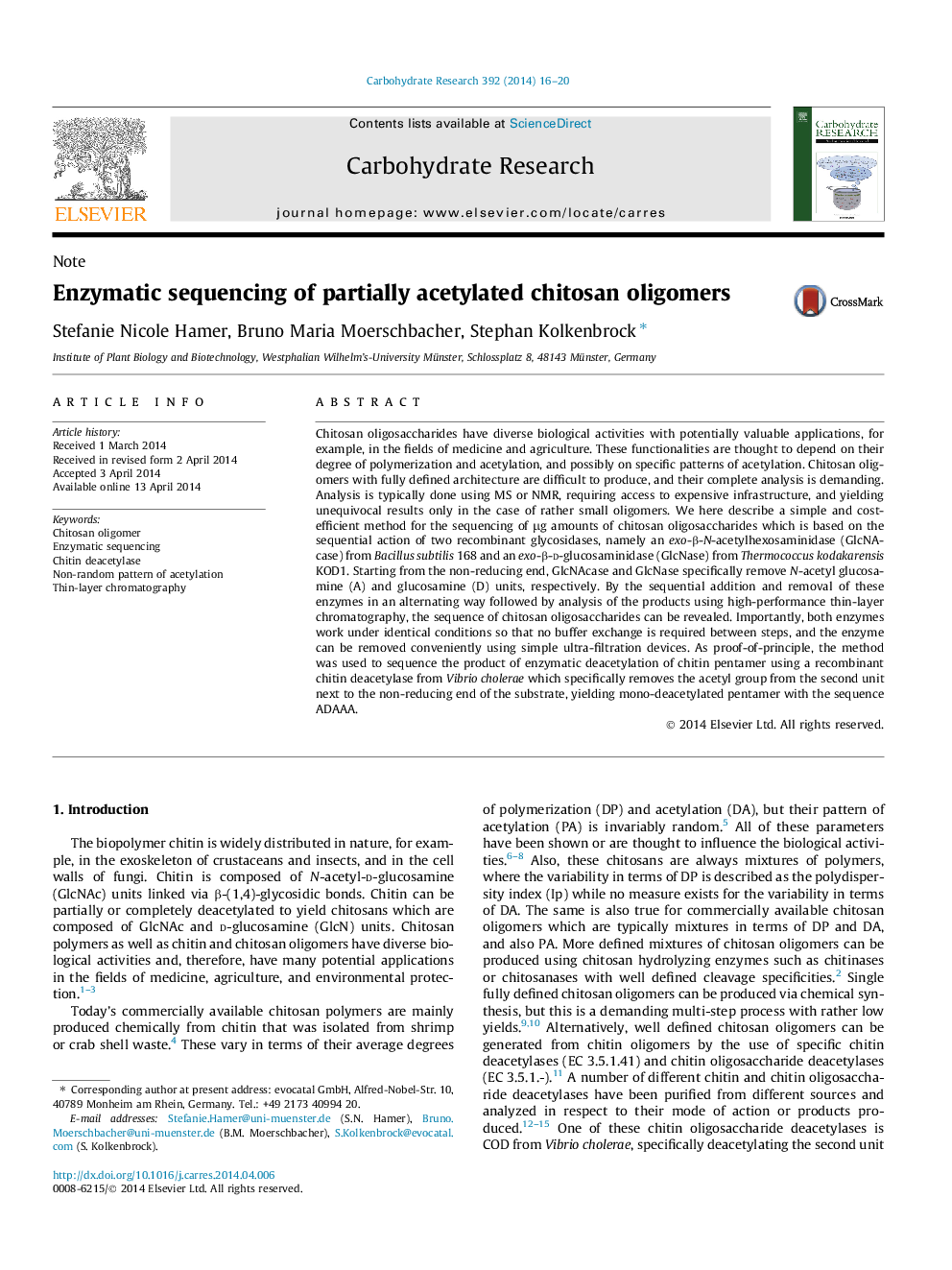| کد مقاله | کد نشریه | سال انتشار | مقاله انگلیسی | نسخه تمام متن |
|---|---|---|---|---|
| 1387636 | 1500859 | 2014 | 5 صفحه PDF | دانلود رایگان |
• A novel enzyme based method to sequence chitosan oligomers has been developed.
• As compared to standard techniques like NMR only μg instead of mg amounts of oligomer are needed.
• This novel method has been certified by mass spectrometry.
Chitosan oligosaccharides have diverse biological activities with potentially valuable applications, for example, in the fields of medicine and agriculture. These functionalities are thought to depend on their degree of polymerization and acetylation, and possibly on specific patterns of acetylation. Chitosan oligomers with fully defined architecture are difficult to produce, and their complete analysis is demanding. Analysis is typically done using MS or NMR, requiring access to expensive infrastructure, and yielding unequivocal results only in the case of rather small oligomers. We here describe a simple and cost-efficient method for the sequencing of μg amounts of chitosan oligosaccharides which is based on the sequential action of two recombinant glycosidases, namely an exo-β-N-acetylhexosaminidase (GlcNAcase) from Bacillus subtilis 168 and an exo-β-d-glucosaminidase (GlcNase) from Thermococcus kodakarensis KOD1. Starting from the non-reducing end, GlcNAcase and GlcNase specifically remove N-acetyl glucosamine (A) and glucosamine (D) units, respectively. By the sequential addition and removal of these enzymes in an alternating way followed by analysis of the products using high-performance thin-layer chromatography, the sequence of chitosan oligosaccharides can be revealed. Importantly, both enzymes work under identical conditions so that no buffer exchange is required between steps, and the enzyme can be removed conveniently using simple ultra-filtration devices. As proof-of-principle, the method was used to sequence the product of enzymatic deacetylation of chitin pentamer using a recombinant chitin deacetylase from Vibrio cholerae which specifically removes the acetyl group from the second unit next to the non-reducing end of the substrate, yielding mono-deacetylated pentamer with the sequence ADAAA.
Figure optionsDownload as PowerPoint slide
Journal: Carbohydrate Research - Volume 392, 17 June 2014, Pages 16–20
